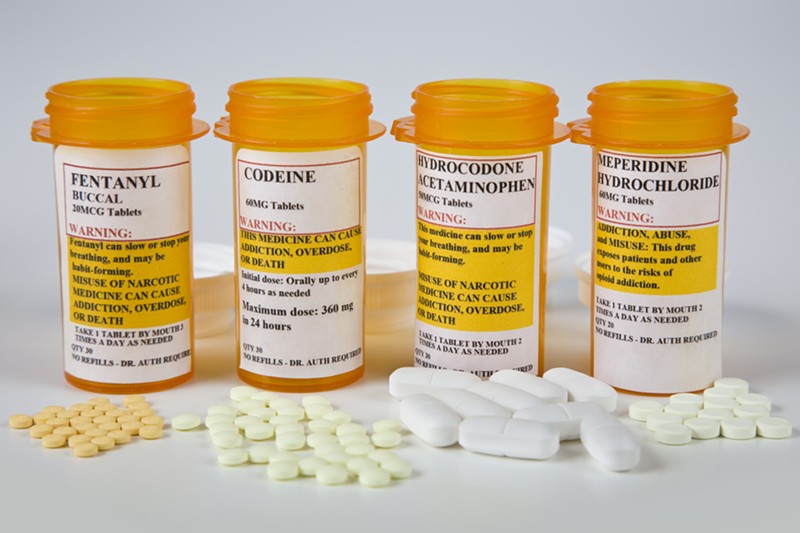A recently released report by Dallas County Health and Human Services and the Recovery Resource Council found that Dallas County has seen a significant increase in overdose death rates, which surged 81% between 2019 and 2023. The synthetic opioid fentanyl, which accounted for 11.4% of opioid-related deaths in 2018, contributed to as many as 70.5% of deaths last year, the study adds.
Fentynal’s impact is even more significant when looking at the counties surrounding Dallas, says Cindy Ledat of the Recovery Resource Council. The nonprofit behavioral healthcare provider publishes annual needs assessments of each of Texas’ regions. Dallas County makes up Region 3 alongside Cooke, Grayson, Fannin, Wise, Denton, Collin, Hunt, Palo Pinto, Parker, Tarrant, Rockwall, Kaufman, Erath, Hood, Johnson, Ellis, Navarro and Somervell counties.
“As of 2023, 79.8% of all opioid-related deaths [in Region 3] are now attributed to fentanyl. … We are increasing at a faster rate than Texas at this point,” Ledat told the Observer. “In the past couple years we've been behind Texas, but [in 2023] we actually surpassed Texas in terms of our rate of fentanyl-related deaths. And for our region, it's really difficult to attribute that to one specific cause.”
What Is Contributing to the Increase in Overdose Deaths in Dallas?
Ledat, who helped author both the Dallas County and Region 3 studies, said a lack of accessibility to healthcare and addiction care is exacerbating Dallas’ overdose problem. The study states that the “complexity” of Dallas’ socio-political landscape has “significantly impacted both opioid use and prevention efforts.”“Dallas is the only county that is majority non-white in terms of their demographic and ethnic population. And so what that means though is that we have large areas that are historically underserved,” Ledat said. “We see lower rates of educational attainment and higher rates of healthcare disparities. … A lot of that is important to take into consideration when we're talking about risk-related factors.”
Southern and western Dallas were highlighted as two regions where uninsured rates are contributing to a lack of accessibility, and the Dallas County Needs Assessment urges city officials to focus resources in those areas.
Citywide and regionally, Increased economic pressures and the continued stigma surrounding addiction could be contributing to the alarming spike in overdoses. Ledat added that in youth populations, traditional “protective factors” such as extracurricular activities are losing popularity.
The effects of COVID-19 isolation on mental health is another factor that is continuing to be felt nationally, added Becky Tinney, director of special projects at the center.
“It was unfortunately kind of a perfect storm of factors to contribute to increased substance use,” Tinney told the Observer. “We're going to see the impact of that, I think, for years to come. When you look at that span of time and this spike in data, I think it goes without saying that a large contributing factor to that has been COVID.”
But if COVID-19 was the primary factor at play in the fentanyl crisis, Dallas County’s data likely wouldn’t stand out against the rest of the counties’ so significantly. Nationally, 2023 marked the first time in five years that overdose death rates dropped, according to The New York Times. The majority of that decline was attributed to a decline in opioid and fentanyl-related overdoses.
Political Factors Could Be Part of It
With health accessibility in Dallas County already an issue, Texas’ stringent penalties for drug possession could be harming outreach efforts as well, the Dallas County Needs Assessment states.Dallas County does not have a clean syringe program, which has been shown to decrease disease spread and increase the number of users seeking treatment. Additionally, drug paraphernalia laws still prohibit fentanyl testing strips in Texas, despite bipartisan support to legalize the harm reduction tool in the Texas Legislature’s last session.
Texas is one of only five states to outlaw the strips. After a record of opposing the decriminalization of the tests, Texas Gov. Greg Abbott changed his mind last year, after gaining a “better understanding” of actions the state needs to take to combat the opioid and fentanyl crisis.
“There’s going to be a movement across the state to make sure we do everything that we can to protect people from dying from fentanyl, and I think test strips will be one of those ways,” Abbott said.
State Sen. Nathan Johnson attempted to start that movement on the state level last year, authoring Senate Bill 623, which would legalize testing strips for controlled substances. The bill received overwhelming support from the state House, passing 143-2, but stalled in the Senate. In a statement to the Observer, Johnson said state lawmakers should revisit legalizing the “cheap, life-saving test strips” in the upcoming session.
“Twenty-five hundred Texans a year – that’s seven people each day – die from drug-related deaths involving fentanyl. Many aren’t even aware that they are ingesting it,” Johnson said. “This session, the Legislature has an opportunity to get the job done.”













